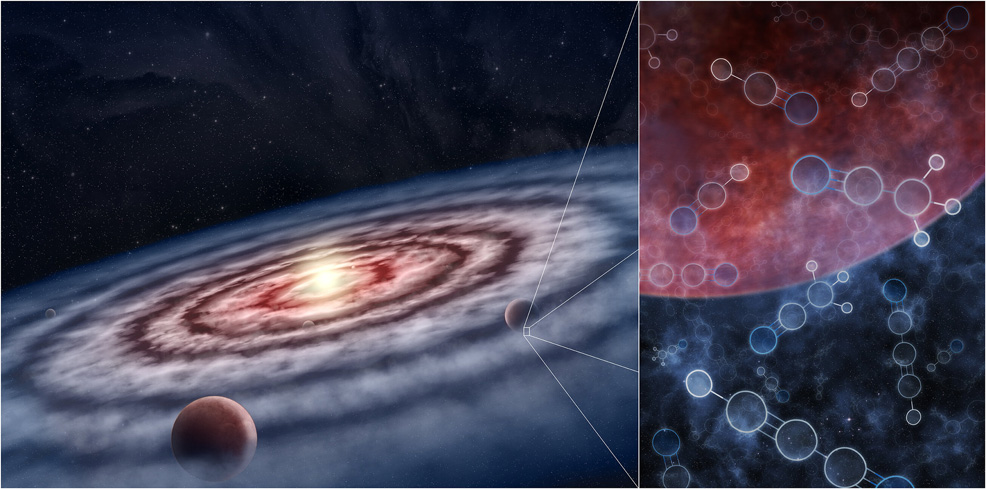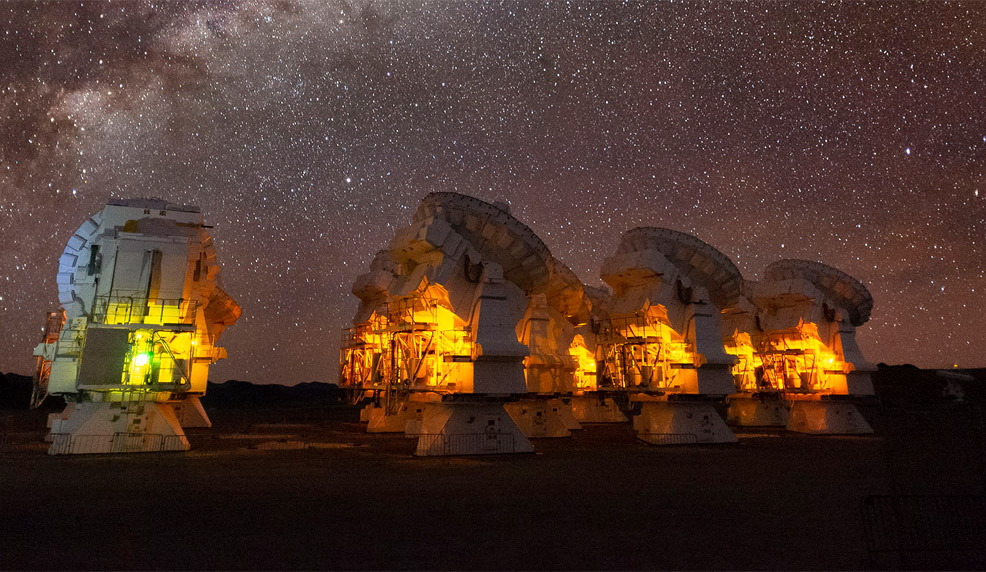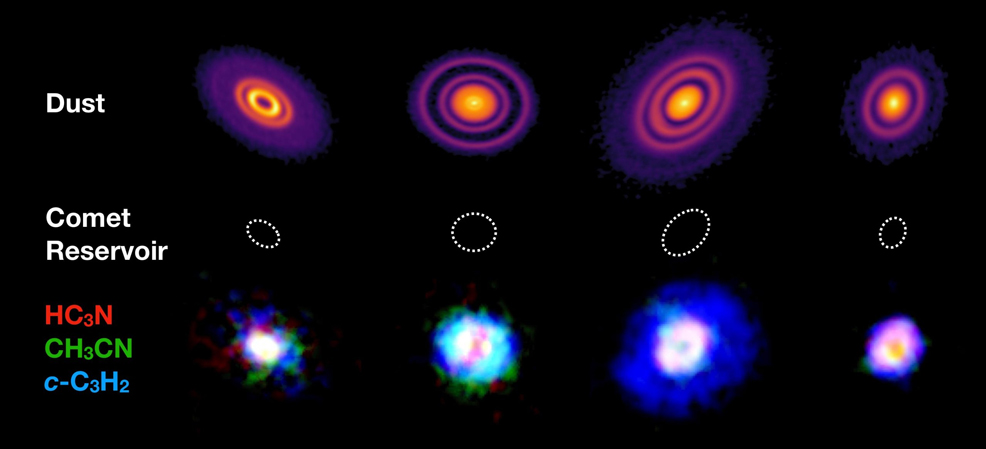
17th September 2021 Alien life chances receive a boost Three of the large organic molecules necessary for life to form have been detected around stars at up to 100 times the level predicted by models.
Analysis of unique fingerprints in light emitted from material around young stars has revealed "significant reservoirs" of large organic molecules needed to form the basis of life. These findings suggest that the basic chemical conditions that produced life on Earth could exist more widely across the Galaxy. Astrophysicists led by the University of Leeds, UK, identified the large organic molecules in protoplanetary disks circling newly formed stars. A similar disk would have once surrounded the young Sun, forming the planets that now make up our Solar System. The presence of these molecules is significant because they are "stepping stones" between simpler carbon-based molecules such as carbon monoxide, found in abundance in space, and more complex molecules that are required to create and sustain biology. The team, collaborating with scientists from 16 other universities around the world, collected data from the Atacama Large Millimetre/submillimetre Array (ALMA). This cluster of 66 dishes, built in the Atacama Desert of northern Chile in 2013, is the most expensive ground-based telescope in operation and the world's most powerful telescope for studying the Universe at submillimetre and millimetre wavelengths – on the boundary between infrared light and the longer radio waves.
"These large, complex, organic molecules are found in various environments throughout space. Laboratory and theoretical studies have suggested that these molecules are the 'raw ingredients' for building molecules that are essential components in biological chemistry on Earth – creating sugars, amino acids and even the components of ribonucleic acid (RNA) under the right conditions," explained Dr John Ilee, Research Fellow at the University of Leeds, who led the study. "However, many of the environments where we find these complex organic molecules are pretty far removed from where and when we think planets form. We wanted to understand more about where exactly, and how much of, these molecules were present in the birthplaces of planets – protoplanetary disks." By combining its network of more than 60 antennas, the ALMA telescope can detect very faint signals from molecules in outer space. Each molecule emits light at distinctly different wavelengths producing a unique spectral 'fingerprint', allowing scientists to confirm molecule types and to study their properties. "The power of ALMA has allowed us to measure the distribution and composition of material that is actively building planets around nearby young stars for the first time," said Dr Catherine Walsh, from the School of Physics and Astronomy at Leeds, co-author on the study. "The telescope is powerful enough to do this even for large complex molecules that are precursors for life." The protoplanetary disks, all with signatures of ongoing planet formation within them, range between 300 and 500 light years from Earth. The research team looked for three molecules – cyanoacetylene (HC₃N), acetonitrile (CH₃CN), and cyclopropenylidene (c-C₃H₂).
"We found more of the large organic molecules than expected, a factor of 10 to 100 more, located in the inner disks on scales of the Solar System, and their chemistry appears similar to that of Solar System comets," said Dr Ilee. As pictured above, four out of the five disks being observed had these molecules present – and importantly, the disk regions in which the molecules are located are also where asteroids and comets form. Dr Ilee says it is possible a process akin to that which may have helped to initiate life on Earth could also happen in these disks, where bombardment by rocky and icy debris transfers the large organic molecules to the newly formed planets. "The key result of this work shows that the same ingredients needed for seeding life on our planet are also found around other stars. It is possible that the molecules that are needed to kick-start life on planets are readily available in all planet-forming environments," said Dr Walsh. For their next work, the researchers want to investigate whether even larger and more complex molecules exist in the protoplanetary disks. "If we are finding molecules like these in such large abundances, our current understanding of interstellar chemistry suggests that even more complex molecules should also be observable," said Dr Ilee. "We're hoping to use ALMA to search for the next stepping stones of chemical complexity. If we detect them, then we'll be even closer to understanding how the raw ingredients of life can be assembled around other stars."
Comments »
If you enjoyed this article, please consider sharing it:
|










